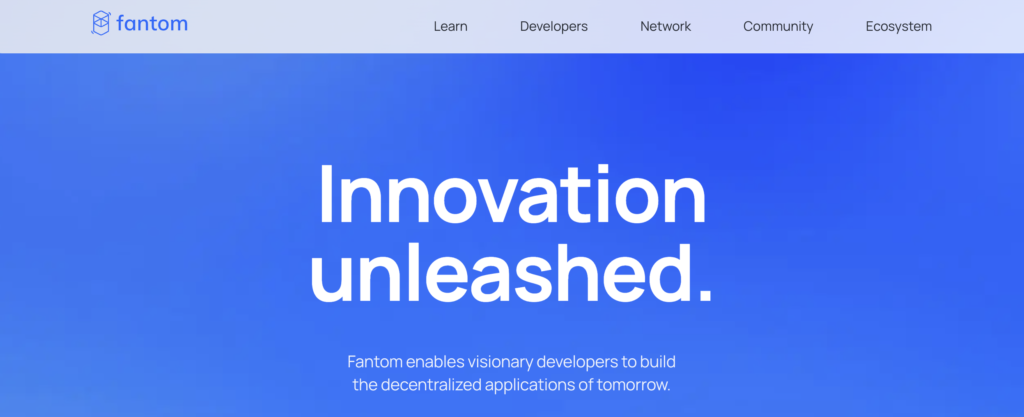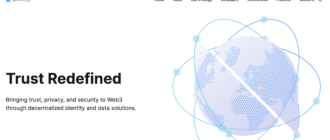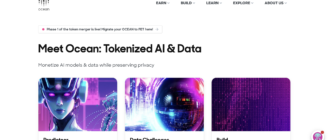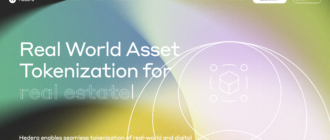Fantom is a high-performance, scalable, and secure smart-contract platform designed to overcome the limitations of previous blockchain technologies by offering improved transaction speed, reduced costs, and enhanced overall security. It positions itself as an alternative to the congested Ethereum network, aiming to support a wide array of decentralized finance (DeFi) applications, and other blockchain-based solutions.

History of the Project
Founded in 2018, Fantom was developed with the vision to address the scalability and efficiency issues prevalent in blockchain networks. The team behind Fantom includes a diverse group of professionals from fields such as engineering, blockchain, and finance, led by Dr. Ahn Byung Ik, a South Korean computer scientist. Fantom’s development marked a significant milestone with its mainnet launch in December 2019, evolving through various upgrades and partnerships that enhanced its ecosystem and market reach.
What is Fantom
Fantom is a decentralized, permissionless, and open-source technology stack built on a bespoke consensus mechanism and a novel protocol layer to facilitate a range of blockchain applications. It is primarily focused on utility within the DeFi, public utilities, and enterprise sectors by providing a foundation that developers can build upon, ensuring high throughput and near-instant transaction finality.
How Fantom Works
Fantom is constructed on a set of innovative technologies designed to address the inefficiencies found in traditional blockchain systems. Each component plays a critical role in ensuring that the platform is scalable, fast, and secure.
Blockchain Architecture
The foundation of Fantom’s technology is its unique approach to blockchain architecture, diverging from the standard blockchain model. Instead of using a traditional linear blockchain, Fantom operates on a Directed Acyclic Graph (DAG) structure. This architecture, known as the “Opera Chain,” allows for transactions to be processed asynchronously and in parallel, rather than sequentially. This setup significantly increases transaction throughput and reduces time to finality—the time it takes for a transaction to be considered confirmed and irreversible.
Lachesis Consensus Protocol
Central to Fantom’s operation is the Lachesis protocol, an advanced consensus mechanism that employs Asynchronous Byzantine Fault Tolerance (aBFT). Unlike classical Byzantine Fault Tolerance (BFT) systems that require a certain amount of “agreement” from network participants to validate transactions, aBFT allows nodes to achieve consensus independently and at different times, which enhances the network’s resistance to failures and malicious attacks. This method provides significant improvements in security and efficiency, ensuring that transactions are finalized within one to two seconds, making Fantom one of the fastest platforms in the blockchain space.
Technical Details and Innovations
The aBFT mechanism is complemented by several other technological enhancements. Fantom’s protocol layers include a new scratch-built consensus layer that is compatible with the Ethereum Virtual Machine (EVM). This means that while it runs its unique consensus algorithm, it can still support Ethereum-based smart contracts and decentralized applications (DApps), providing a smooth transition for developers from Ethereum to Fantom.
Additionally, Fantom introduces a novel mechanism for transaction verification and propagation in the network. Instead of all nodes needing to process every transaction, Fantom uses a system where a subset of nodes, called validators, are responsible for confirming transactions. Validators are selected based on their stake in FTM, the native token, which they commit as collateral to participate in the consensus process. This staking mechanism not only secures the network but also incentivizes participation and honest behavior by validators.
Differentiation from Other Projects
What sets Fantom apart from other blockchain projects is its blend of high throughput, low transaction costs, and robust security features without compromising on decentralization. The use of DAG and aBFT together positions Fantom uniquely in the ecosystem, allowing for near-instant transaction finality and scalability that traditional blockchains and even many modern DAG-based platforms struggle to achieve. This combination of speed, efficiency, and developer-friendly features provides a potent solution for enterprises and applications needing a reliable blockchain infrastructure.
Tokenomics of Fantom
Fantom uses a native cryptocurrency, the FTM token, which is pivotal to its network operations. To clarify, FTM functions primarily as a utility token, although it is sometimes colloquially referred to as a “coin”. It is utilized within the Fantom network for various purposes such as paying for transaction fees, governance, staking, and participating in the system’s security.
Token vs. Coin
FTM is considered a token because it operates on top of the Fantom blockchain, unlike standalone coins which operate on their own blockchain. As a token, it is integral to facilitating the broader ecosystem’s functionalities, including governance decisions, fee payment, and rewards distribution.
Emission Model
Fantom has adopted a fixed supply model with a hard cap of 3.175 billion FTM tokens, intended to prevent inflation and ensure sustainability. The token’s distribution was initially set during its ICO, followed by allocations for rewards, the team, advisors, and strategic reserves. The predetermined supply cap plays a crucial role in the economic stability of the network by mitigating potential depreciation through excessive supply.
Staking and Network Security
In the Fantom ecosystem, FTM serves as a staking token which users can lock up as a form of “security deposit” to participate as network validators. This staking is critical for the security and integrity of the network, as it uses a proof-of-stake model to select validators based on the amount of FTM they stake. The more FTM a validator stakes, the higher their chance of being chosen to validate transactions, for which they earn rewards. The staking mechanism also includes a system of penalties (slashing) where validators can lose a portion of their staked tokens for actions that could harm the network, such as double signing or node downtime.
Price Dynamics and Market Considerations
The value of FTM is influenced by market demand, utility within the network, and speculative interest, just as with other cryptocurrencies. The token’s price can fluctuate based on network adoption, overall crypto market trends, and investor sentiment. Since FTM is required to perform operations such as executing smart contracts and transferring tokens, higher network usage can lead to an increased demand for FTM, potentially impacting its price positively.
Where to Buy FTM Token
Fantom’s FTM token is available on several major cryptocurrency exchanges, ensuring accessibility for a broad range of investors. Here is a list of some prominent exchanges where you can purchase FTM:
- Binance: As one of the largest and most popular cryptocurrency exchanges globally, Binance offers extensive trading pairs for FTM, including against fiat currencies and other cryptocurrencies.
- HTX (formerly Huobi): Known for its robust platform and significant market depth, HTX provides options for trading FTM in various pairs, facilitating both spot and futures trading.
- MEXC: This exchange is celebrated for its user-friendly interface and a wide selection of trading pairs. MEXC supports FTM and often features it in trading competitions and staking opportunities.
- Bybit: Bybit, primarily known for derivatives, also offers spot trading for FTM. It’s chosen by traders looking for high liquidity and advanced trading features.
- KuCoin: Popular among international users for its wide range of cryptocurrencies, KuCoin offers several pairs for FTM, including against its native KCS token.
- Bitfinex: Offering a suite of order types and high liquidity, Bitfinex is a good choice for trading FTM, especially for more experienced traders who demand advanced trading functionalities.
When choosing an exchange, consider factors such as fees, security features, user interface, and regulatory compliance.
Where to Store Fantom Token
For storing FTM, a variety of wallets are available, each providing different features and levels of security:
- Ledger Wallet: A hardware wallet like Ledger supports FTM and offers one of the highest security levels by storing your tokens offline. It is ideal for users looking to hold FTM for long periods.
- Trezor: Another secure hardware wallet option that supports FTM. Trezor keeps your tokens safe from online threats, making it a secure choice for substantial investments.
- MetaMask: While primarily known for Ethereum, MetaMask can be configured to support the Fantom network by customizing the network settings. This wallet is particularly popular for its integration with many DeFi platforms.
- Trust Wallet: A mobile wallet that supports multiple cryptocurrencies including FTM. It offers a user-friendly interface and is handy for those who prefer mobile access to their crypto holdings.
- Fantom Wallet: Specifically designed for the Fantom ecosystem, the Fantom Wallet is a software wallet that enables users to send, receive, and stake FTM directly from their wallet interface. It also integrates seamlessly with Fantom’s DeFi services.
When selecting a wallet, consider your specific needs such as convenience, security level, and additional features like staking or DeFi interaction. Hardware wallets are generally recommended for holding large amounts or for long-term storage, while software wallets are suitable for smaller amounts and more frequent access.
Future Prospects and Development Forecast
Fantom’s growth trajectory is grounded in its robust technological foundation, strategic partnerships, and a broadening ecosystem that supports a wide range of applications from DeFi to enterprise solutions.
Growth Drivers
The primary growth drivers for Fantom include its high-performance capabilities such as near-instant transaction finality and significantly lower transaction costs compared to its predecessors like Ethereum. The platform’s ability to maintain compatibility with Ethereum through the EVM enables an easier transition for developers looking to leverage faster and cheaper alternatives.
Clients and Partnerships
Fantom has established various notable partnerships that enhance its functionality and broaden its user base:
- Oracle providers like Chainlink and Band Protocol: These integrations allow Fantom to securely import and utilize real-world data for its DeFi applications.
- Governments and municipalities: For instance, Fantom has entered into partnerships with Pakistan and Uzbekistan to explore blockchain solutions in public services.
- DeFi platforms such as Yearn.finance and SushiSwap: These collaborations integrate Fantom’s technology to enhance transaction speed and efficiency within their ecosystems.
These partnerships are instrumental in promoting the adoption of Fantom’s technology across different sectors, thereby increasing the utility and demand for FTM tokens.
Development Forecast
The forecast for Fantom’s development is largely positive, with ongoing enhancements to its core technology and a growing list of strategic partnerships. The platform is increasingly being recognized for its potential to host enterprise-level applications and large-scale DeFi services, which could significantly boost its adoption and usage. Additionally, the ongoing trend towards multi-chain architectures in the blockchain space presents an opportunity for Fantom to integrate with other networks, enhancing its interoperability and relevance.
Fantom Ecosystem
The Fantom ecosystem encompasses a variety of projects and services that utilize its high-speed consensus mechanism and developer-friendly platform:
- DeFi Projects: Including platforms like SpookySwap, SpiritSwap, and Cream Finance, which offer decentralized exchange (DEX) and lending services.
- NFT Marketplaces: Such as Artion and PaintSwap, which provide platforms for creators to mint and trade NFTs.
- Gaming and DApps: With games like Rarity and other decentralized applications that utilize the low-cost, high-throughput environment of the Fantom network.
- Oracle Services: Integrations with Chainlink and Band Protocol ensure that smart contracts on Fantom can interact with external, real-world data securely and reliably.
- Tooling and Infrastructure: Including APIs, SDKs, and other developer tools that facilitate the building of applications on Fantom’s platform.
The expansion of this ecosystem is a testament to Fantom’s versatility and adaptability, making it a significant contender in the blockchain space. This diverse range of applications not only helps in increasing the utility of FTM but also attracts a broader audience to the platform, fueling further growth and innovation.
Conclusion
Fantom stands out in the crowded field of blockchain projects by offering a unique blend of technological advancements and practical applications. Its focus on solving real-world problems through high-speed, scalable smart contract technology makes it a significant player in the blockchain ecosystem. As the platform continues to evolve and expand its capabilities, it remains a compelling option for developers and investors alike, looking to leverage blockchain technology for innovative solutions and investment opportunities.






